Last updated on March 3, 2016
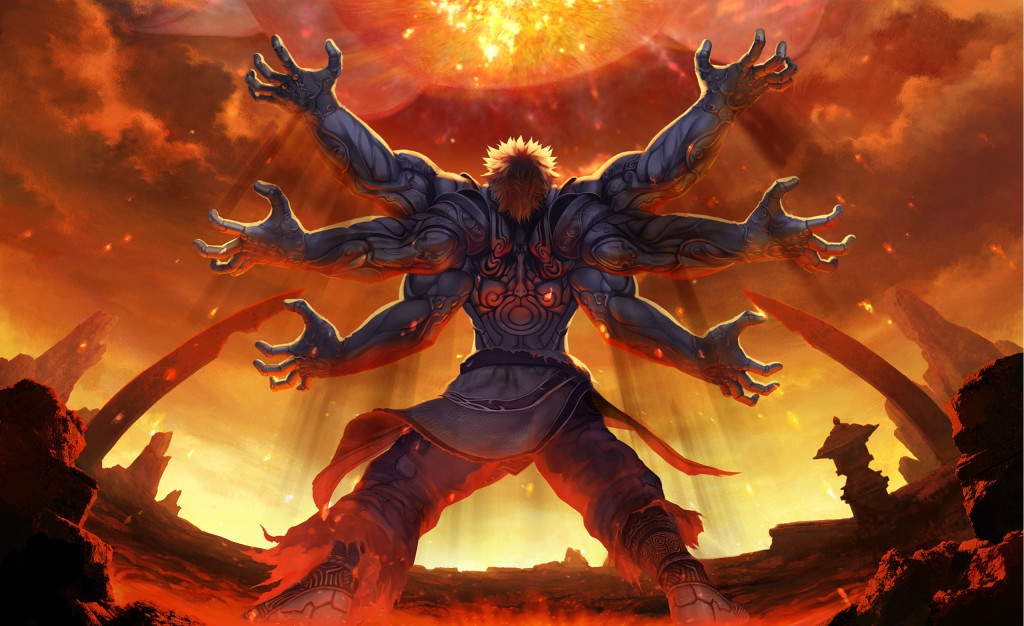 Part 1
Part 1
For those of you who stick around, or for those of you who actually played the game already, you knew this part was coming! Asura’s Wrath, as a game, fails in nearly every respect. While it certainly tries its hardest to present a visually, emotionally, and mechanically satisfying experience, the failure of this last facet of game design seems, to my mind, too much to ignore. There are several levels where this fails, and we will examine them in turn.
Note that I am not going to criticize the game for the cutscenes being “too long”, or the quicktime events “not actual mattering” in a number of instances. Yes, both these things remain true when you play the game. The cutscenes progress much like a typical anime show, in that lots of people talk before action happens. CyberConnect2 made this choice consciously to supplement the goal of making a video game anime, so it’s hard to fault them for this; heck, there’s even fake commercial breaks, divisions of levels into “episodes”, and previews of NEXT TIME ON ASURA’S WRATH emblazoned on the screen.
Further, a lot of the button presses really don’t matter for your progress, aside from getting a good mission score, but they simply highlight the action happening in a cutscene. I know quite a few game with long cutscenes (*cough* Final Fantasy *cough*) which give zero interactivity during long segments – at least CyberConnect2 keeps you engaged, especially when you need to jam on the circle/B button to ensure you don’t suddenly die. Again, these fit with the intentions of the developer, so I don’t have a big problem with the game.
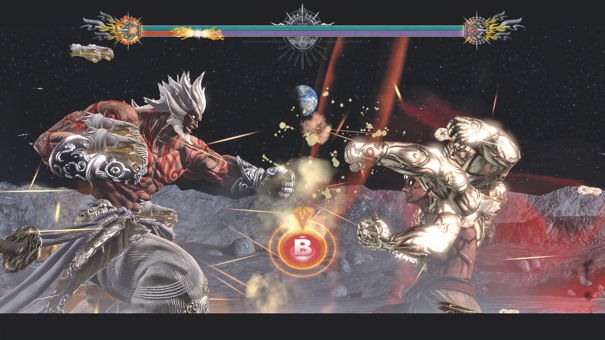
When I did encounter a problem with the game, it derived from its game modes of choices: both stylish action brawler, and Panzer Dragoon/Star Fox copycat. These segments make up the majority of the “in-game” play moments you’ll experience in Asura’s Wrath, and while both seem interesting, they lack a certain refinement and depth that even appears in CyberConnect2’s other releases. In other games in these genres, you can obtain familiarity with those mechanics over a period of time via good level design. That, after all, is the whole point of such games: interesting decisions fostered by the rules of the system, with a level design progression to match the player’s ever-increasing skill. Asura’s Wrath, due to the weight and density of its cutscene/playtime ratio, suffers mercilessly as a result. Playing on Hard for my entire time through the game led again and again to a keen observation that the game simply wasn’t designed for difficulty progression at all.
Note: As I played Asura’s Wrath on PS3, I’ll be references PS3 controls in my discussion of the game mechanics.
First, let’s discuss the combat mechanics. Most fights take place in an arena format, a wide open area that presumably allows Asura to move around freely. The circle button gives you a standard combo chain, and the one you’ll use throughout the game – the moves you have at the start, you’ll have at the end, as there’s no upgrade system to speak of. Holding the circle button performs a juggle move, which launches most enemies into the air, and you can subsequently perform air combos via circle as well after jumping with X (cross, whatever you call it). Pressing R1 (I think?) on the ground performs a evade roll, which has some invincibility frames to get you out of tight spots.
Holding the circle button in air does a devastating dive attacks, which can get you to the ground quickly and out of range of enemy attacks. Additionally, Asura uses ranged attacks with square, which becomes useful for enemies that can’t be reached via jumps or other means. As Asura can’t dash in the way you expect in these games, you’ll need this with the lock-on system (L1, then move the right stick left to right to switch targets) to kill those enemies before they mess you up.
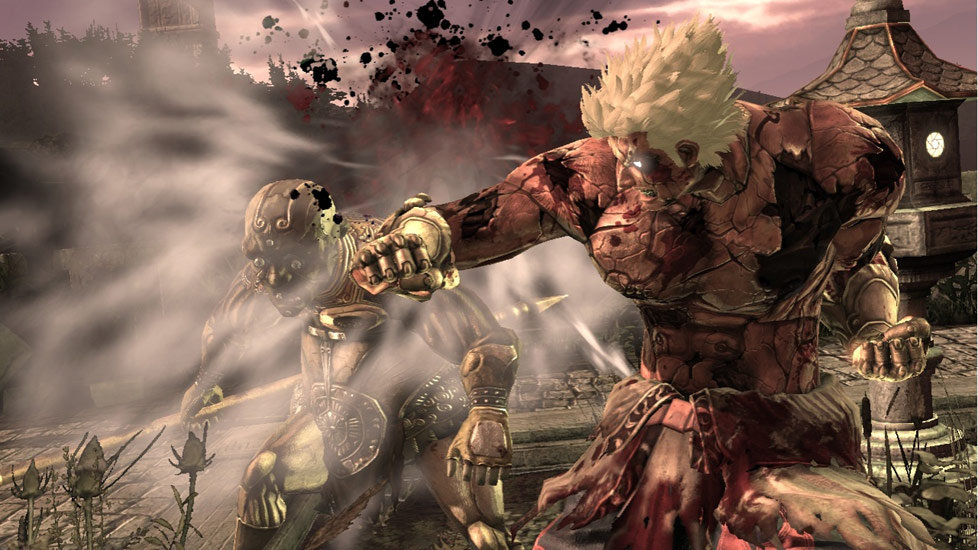
Triangle, on the other hand, performs heavy attacks which act as a waveclear of all enemies in the area, knocking them down or simply blasting them. These attacks cause Asura to “overheat”, and they have a cooldown period, so you should use them wisely. Triangle also acts as your de facto “counter” button; most enemies perform attacks which you can counter by pressing triangle, and this will perform a canned animation which 1. looks really cool and 2. knocks an enemy down. A knocked down enemy allows for an additional special move by pressing triangle, provided you’re not overheated.
You might imagine that all of these mechanics sound pretty standards, but they aim toward a particular end which is…rather unusual, to say the least. Yes, enemies can die, but that’s not the purpose of these combat sections. Rather, you’re encouraged to fill the Burst gauge, the blue gauge right underneath the red Health gauge. Attacking enemies repeatedly fills ups the Burst gauge; the harder an attack is to perform correctly (i.e., counters), the more Burst it will generate. Filling the gauge to full will initiate a button prompt for R2, along with a giant BURST text in the middle of the screen. Press it, and the game will launch into a cutscene or the next action sequence.
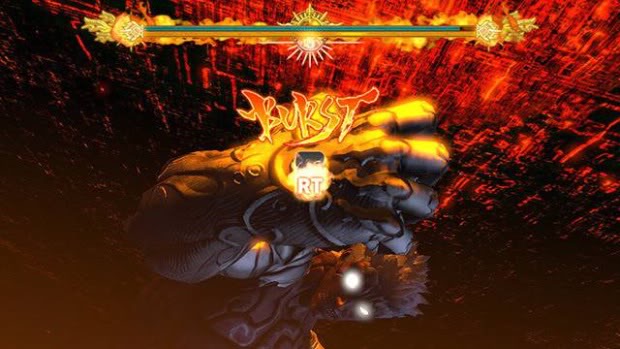
Lastly, there’s a gauge underneath the Burst gauge for Unlimited mode, which acts similar to a Devil May Cry Devil Trigger – you do more damage, and generate more Burst when you press L2. This fills by attacking things, but with far greater frequency; it also makes you nearly immune to all damage for its duration, so you obviously want to take advantage of this as much as possible. Most combat sequences revolve less around deft understanding of the (admittedly) simple moveset, and more on your ability to get Unlimted mode as much as possible so you can Burst to the next sequence.
For those who can’t play the game well, the developers also added a sort of failsafe which they call “dodging”. Basically, if you press the jump button at the right time after getting hit by a massive attack, Asura “recovers” in the air, and thereby also gets a ton of his health back. I imagine this is a mechanical way of representing the push/pull of gigantic anime fight sequences, but it’s a little jarring how much health it can give back at time. It also seems to require no real timing, as I simply pressed it a lot and obtained a dodge every single time.
Unsurprisingly, none of this is particularly deft or well-done; it looks great, granted, but this is NOT a great combat system. Every fight, including boss fights, really include the exact same strategy: fill the Burst Gauge before you end up dying. On Easy, this is thematic relevant and enjoyable to press buttons like a crazy person with little consequence; on Hard, fighting turns into an ABSOLUTE NIGHTMARE. Enemies take out way too much damage; the margin for error on boss fights is so slim as to be nonexistent. They clearly tuned Hard for repeat playthroughs, but who wants to play a story-based game again right after they finished it? Certain stages contain WAY TOO MANY ENEMIES in a row without life regeneration, and that makes Hard mode incredibly frustrating.
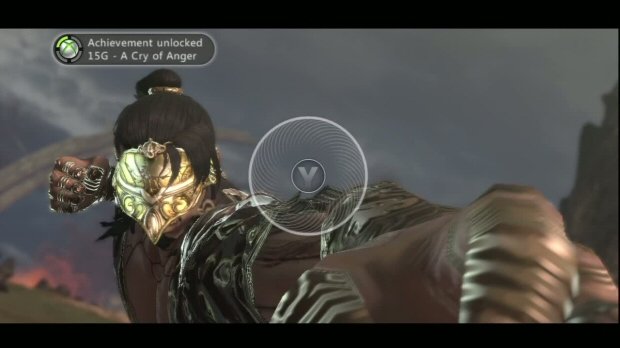
Further, I could never quite get the roll timing quite right; enemy attacks hit in far too wide an area for a player to tell whether or not they are safe. The camera, unless you’re fighting a 1-on-1 duel, also has a tough time keeping up with the action, as it zooms in such a weird way on your target that other enemies (who can attack from offscreen, WOW IS THIS FRUSTRATING) can’t be seen very well. You need 360 degree awareness, and the camera doesn’t provide it. I just stopped using the lock-on except for ranged enemies, since it became so difficult to actually stay alive. The camera just does not aid the player at all, providing a cinematic rather than a practical angle, and the game itself suffers for it.
That’s not to mention that you don’t get to fight consistently enough to ever get the hang of it, unless every boss encounter crushes you for the first dozen times you play it (my recommendation to NOT PLAY HARD MODE still stands). It’s just a mess of a game in the combat sections, lacking the polish required to make it interesting. They exist as vehicles to push you towards the next cutscenes, which makes you wonder why they bothered to put these sequences into the game at all. I think it could have worked, but the combat DOES NOT WORK at higher levels of play; it made me long for Platinum Games or Team Ninja, that’s for sure!
